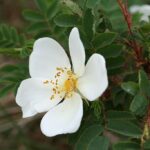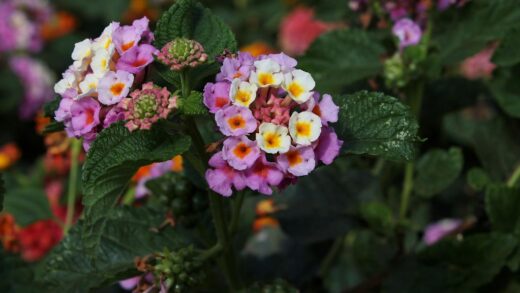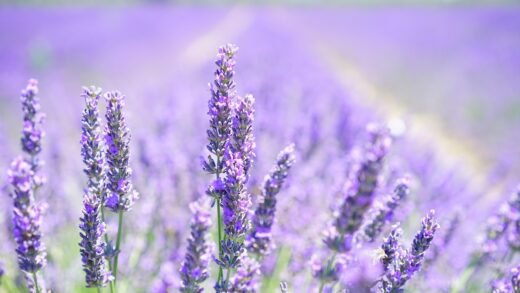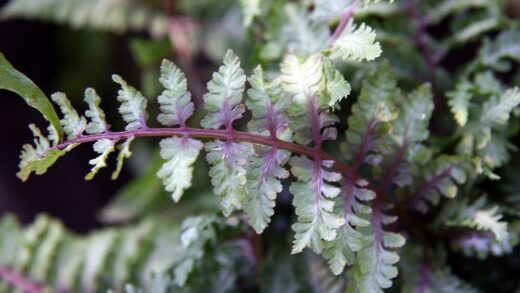Understanding and managing the water requirements of spiraea is fundamental to cultivating a healthy, vibrant, and floriferous shrub. While these plants are renowned for their resilience and considerable drought tolerance once established, their performance is directly linked to receiving appropriate moisture throughout their life cycle. Water is the essential vehicle for nutrient transport, a key component in photosynthesis, and crucial for maintaining the turgor pressure that keeps stems and leaves rigid. An imbalance, whether too much or too little, can lead to significant stress, reduced flowering, and an increased susceptibility to pests and diseases. Therefore, developing a thoughtful and responsive irrigation strategy is a core skill for any gardener aiming to maximize the potential of their spiraea.
The journey of a spiraea, from a newly planted shrub to a mature specimen, involves evolving water needs that demand different levels of attention from the gardener. During the establishment phase, consistent and deep watering is non-negotiable, as it is the catalyst for developing the robust root system that will sustain the plant for its entire life. As the plant matures, its needs change, but the importance of water does not diminish, especially during periods of environmental stress like prolonged heat and drought. A keen eye for the subtle signs of thirst is a gardener’s most valuable tool in this regard.
This article aims to provide a comprehensive guide to the art and science of watering spiraea. It will explore the critical initial watering period, methods for assessing moisture needs in established plants, and the most effective irrigation techniques to ensure water is delivered efficiently. Furthermore, it will examine how external factors such as soil composition, climate, and mulch can profoundly influence a plant’s hydration levels. The goal is to move beyond a rigid, calendar-based watering schedule and embrace a more intuitive approach that responds to the specific conditions of the garden and the plant itself.
Ultimately, proper irrigation is about maintaining a delicate balance. It is about providing enough water to support vigorous growth without creating the waterlogged conditions that can lead to fatal root diseases. This balance is achieved through a combination of knowledge, observation, and the right techniques. By mastering the principles of spiraea irrigation, a gardener can ensure their shrubs not only survive but truly thrive, rewarding them with season after season of breathtaking floral displays and lush foliage.
Water needs during establishment
The most critical period for watering a spiraea shrub is during its first year in the garden after being planted. During this establishment phase, the plant is directing a significant amount of energy into developing a new root system that can explore the surrounding soil for water and nutrients. To support this crucial development, the soil must be kept consistently moist. A lack of adequate water during this time is the most common reason for the failure of new plantings. The goal is to prevent the root ball from ever completely drying out, which would cause severe stress and potential death of the plant.
More articles on this topic
A practical guideline for watering a newly planted spiraea is to provide a deep soaking two to three times per week for the first few months, especially if rainfall is scarce. The objective is not just to wet the surface but to ensure the water penetrates deeply into the soil, encouraging the roots to grow downwards in search of moisture. This practice helps to build a more drought-resistant root structure for the future. After the first couple of months, you can gradually reduce the frequency of watering as the plant’s root system begins to expand and become more self-sufficient, but vigilance is still required throughout the entire first growing season.
The amount of water required can be quantified as approximately one inch of water per week, delivered to the root zone of the plant. A simple way to measure this is by placing an empty can, like a tuna can, within the watering area; when the can is full, you have delivered about one inch of water. It is far more beneficial to provide this amount in a single, deep watering session rather than several light, shallow applications. Shallow watering encourages the development of a shallow root system, which makes the plant more vulnerable to drought and heat stress in the long run.
Monitoring the soil moisture directly is the most reliable way to determine if a new spiraea needs water. Simply insert a finger two to three inches into the soil near the base of the plant. If the soil feels dry at that depth, it is time to water. If it feels moist, you can wait and check again in a day or two. This hands-on method helps to prevent both underwatering and the equally damaging problem of overwatering, ensuring the young plant has the perfect conditions to establish itself strongly.
Irrigation for mature plants
Once a spiraea shrub is well-established, typically after its first full year in the ground, its watering needs decrease significantly. A mature and healthy spiraea develops an extensive and efficient root system, making it remarkably drought-tolerant and capable of withstanding normal periods without rainfall. For much of the growing season in a temperate climate, natural rainfall may be sufficient to meet the plant’s needs without any supplemental irrigation. This resilience is one of the key attributes that makes spiraea such a popular and low-maintenance choice for gardeners.
More articles on this topic
However, even established plants are not invincible and will require supplemental water during periods of extended drought, extreme heat, or windy conditions that increase the rate of transpiration. The signs of a thirsty mature spiraea are often subtle at first but can include a slight wilting or drooping of the leaves during the hottest part of the day, a loss of luster in the foliage, or premature yellowing and dropping of lower leaves. If these signs are observed, it is a clear indication that the plant would benefit from a deep and thorough watering.
When irrigating a mature spiraea, the principle of deep, infrequent watering remains paramount. The goal is to moisten the entire root zone, which on a mature shrub can extend several feet wide and deep. A slow, steady application of water over a longer period, using a soaker hose or by letting a regular hose trickle at the base of the plant, is the most effective method. This allows the water to be absorbed slowly into the soil with minimal runoff, ensuring it penetrates deeply and encourages the continued maintenance of a deep root system. A single, deep watering session every couple of weeks during a drought is far more beneficial than a light sprinkling every few days.
As with new plants, checking the soil condition is always the best guide. Even if the weather has been hot and dry, the soil several inches below the surface might still retain considerable moisture, especially in well-mulched garden beds. Before automatically applying water, take a moment to assess the actual conditions. By responding to the plant’s visible cues and the tangible state of the soil, gardeners can provide water precisely when it is needed, conserving resources and promoting the long-term health and resilience of their established spiraea shrubs.
The influence of soil and mulch
The type of soil in which a spiraea is planted has a profound impact on its water requirements and the effectiveness of any irrigation strategy. Sandy soils, for example, have large particles and do not hold water well, allowing it to drain through the root zone very quickly. Spiraea planted in sandy soil will need to be watered more frequently than those planted in other soil types, as the moisture reservoir is depleted much faster. Constant vigilance is required to ensure these plants do not dry out, especially during hot weather.
In contrast, heavy clay soils consist of very fine particles and have a high water-holding capacity, but they can also be slow to absorb water and can easily become waterlogged if over-irrigated. For spiraea in clay soil, it is crucial to water slowly to allow for absorption and to ensure the soil has a chance to dry out slightly between waterings to maintain adequate oxygen levels for the roots. The ideal soil is a well-draining loam that strikes a balance, retaining adequate moisture while allowing excess water to drain away freely, representing the perfect environment for a healthy spiraea.
Mulch is a gardener’s most valuable ally in managing soil moisture effectively. Applying a two- to three-inch layer of organic mulch, such as wood chips, shredded bark, or compost, over the root zone of a spiraea offers numerous benefits. Mulch acts as a barrier, significantly reducing the amount of water that evaporates from the soil surface, which means more water remains available to the plant’s roots for a longer period. This simple act can dramatically reduce the need for supplemental watering throughout the growing season.
Furthermore, mulch helps to regulate soil temperature, keeping the roots cooler in the summer and warmer in the winter, which reduces overall plant stress. It also prevents soil compaction from heavy rains and suppresses the growth of weeds that would otherwise compete with the spiraea for available water. As the organic mulch gradually decomposes, it improves the soil’s structure and water-holding capacity over time. The consistent use of mulch is a cornerstone of an efficient and sustainable water management plan for any spiraea shrub.
Effective watering techniques
The method used to deliver water to a spiraea can be just as important as the frequency and amount. The most efficient and plant-friendly techniques are those that apply water directly to the soil over the root zone. Drip irrigation systems and soaker hoses are exemplary in this regard. These systems release water slowly and at a low pressure, allowing it to be absorbed directly into the soil where it is needed most. This minimizes water loss through evaporation and ensures that the plant’s foliage remains dry, which is a key factor in preventing common fungal diseases like powdery mildew.
If using a handheld hose, it is best to place the end of the hose at the base of the plant and let the water flow out in a gentle stream. Avoid using a high-pressure spray nozzle, as this can cause soil erosion, expose surface roots, and splash soil-borne pathogens onto the lower leaves of the plant. By allowing the water to trickle out slowly, you mimic the effects of a gentle rain and give the soil time to absorb the moisture deeply. Taking the time to water in this manner is a worthwhile investment in the plant’s long-term health.
Overhead watering with sprinklers is generally the least effective method for irrigating shrubs like spiraea. A significant portion of the water can be lost to evaporation before it even reaches the ground, especially on warm or windy days. Furthermore, this method wets the entire plant, and persistent moisture on the leaves creates an ideal environment for the development and spread of fungal diseases. If a sprinkler system is the only available option, it is crucial to water early in the morning, which allows the sun and airflow to dry the foliage quickly, reducing the window of opportunity for pathogens to take hold.
The timing of watering can also enhance its effectiveness. Watering in the early morning is considered the best practice. At this time of day, cooler temperatures and calmer winds mean that less water is lost to evaporation, allowing more of it to reach the plant’s roots. Watering in the evening is a less desirable alternative, as the foliage may remain damp throughout the night, increasing the risk of disease. Watering in the middle of a hot, sunny day is the least efficient option due to the high rate of evaporation. A well-timed, well-placed application of water is the hallmark of a smart irrigation strategy.
Recognizing signs of water stress
Developing the ability to recognize the signs of both under- and overwatering is crucial for maintaining the health of spiraea shrubs. Underwatering, or drought stress, typically manifests first as a wilting or drooping of the leaves, particularly during the warmest part of the day. The leaves may also lose their vibrant color, appearing dull or grayish-green. If the stress continues, the edges of the leaves may turn brown and crispy, a condition known as leaf scorch. In severe cases, the plant will begin to shed leaves and flowers prematurely to conserve its limited water resources.
Another sign of underwatering is slowed or stunted growth. A plant that is not receiving enough water will not have the internal pressure (turgor) needed to expand its cells and produce new leaves and stems. The soil itself can also be a clear indicator; if the ground is cracked and pulling away from the base of the plant, it is a sign of severe dryness. Promptly providing a deep and thorough watering when these symptoms first appear can often allow the plant to make a full recovery.
Conversely, overwatering can be even more damaging to a spiraea than underwatering, as it leads to root rot. The primary symptom of overwatering is often yellowing leaves (chlorosis), which may affect older and younger leaves alike and can be easily mistaken for a nutrient deficiency. The leaves may also feel soft and limp, and in advanced cases, the entire plant may wilt, not from a lack of water, but because the rotting roots are no longer able to absorb any water at all. This creates a confusing scenario where a wilting plant is sitting in soggy soil.
To confirm suspicions of overwatering, it is important to inspect the soil. If the soil around the plant is consistently saturated, muddy, or has a sour smell, it is a clear sign of poor drainage and excessive moisture. The only remedy is to reduce the frequency of watering immediately and, if possible, improve the soil drainage by amending it with organic matter or aerating the surrounding area. Learning to distinguish between the signs of too little and too much water is a fundamental skill that allows a gardener to respond with the correct action, ensuring the long-term survival of their spiraea.


















